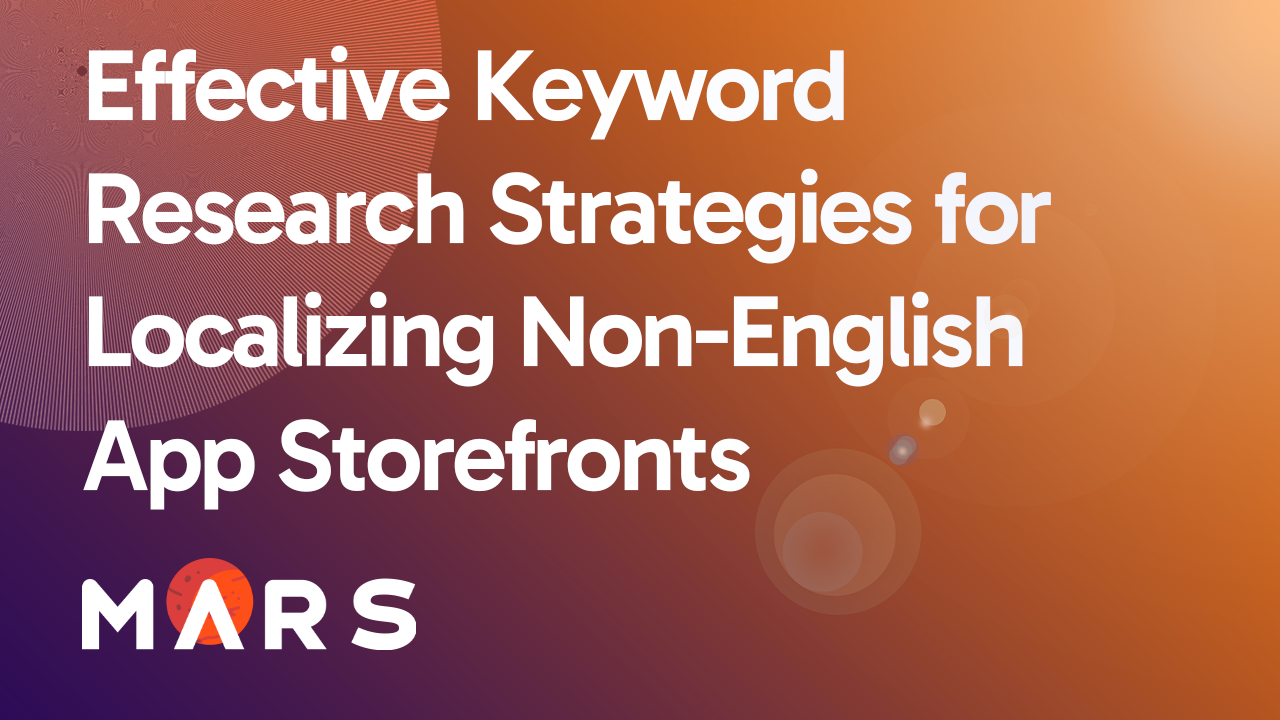The world of mobile apps is growing rapidly, and so is the need to cater to diverse, global audiences. Creating a localized app storefront tailored to non-English markets isn’t just a bonus—it’s essential. With app stores becoming more competitive, crafting an effective keyword research strategy for localization is critical to ensure visibility, relevance, and success in global markets.
Introduction to Localized Keyword Research
Localization is more than simply translating text from one language to another. It’s about adapting content, keywords, and even visuals to match the cultural and linguistic nuances of your target market. This approach fosters trust, improves user experience, and maximizes app discoverability.
For instance, a fitness app targeting Spanish-speaking users in Latin America might need to optimize for keywords like “ejercicio en casa” (home workout) rather than “gimnasio” (gym), which may have lower relevance for certain demographics.
The Importance of Localization in ASO
App Store Optimization (ASO) is the cornerstone of app visibility. However, ASO for non-English markets requires a different approach:
- Localized Content: Localizing content makes your app appear as though it was created specifically for that market.
- Cultural Relevance: Tailored keywords resonate better with users.
- Competitive Edge: Apps with localized metadata outperform their generic counterparts in user engagement and downloads.
Without localization, even the most innovative apps risk being overshadowed by competitors.
Market Research for Non-English Regions
Before diving into localization, conduct in-depth research to understand the unique needs of your target audience. Some factors to consider include:
- Demographics: Who is your app targeting? For example, urban versus rural users might have different keyword preferences.
- Cultural Sensitivities: Words, phrases, or visuals can carry different meanings across cultures.
- User Behavior: Analyze how users in your target region search for apps.
Understanding these dynamics ensures your localization efforts are on the right track.
Choosing the Right Tools
Several tools simplify the process of keyword localization, each with its unique strengths. Some must-have tools include:
- Google Trends: Helps identify trending searches by region.
- Sensor Tower: Offers market insights and competitor analysis.
- AppTweak: A go-to for ASO with powerful multilingual capabilities.
- DeepL: For context-sensitive translations beyond simple word-for-word conversions.
Combining these tools gives you a comprehensive view of user behavior in non-English markets.
Building a Foundation with Core Keywords
Start by identifying the core keywords that drive traffic in your primary market. Expand this list by brainstorming synonyms, phrases, and related terms. For example, if “budget planner” is a primary keyword in English, consider variations like “expense tracker” or “money manager.”
Localization Versus Translation
Direct translation often leads to keywords that are either meaningless or irrelevant. Localization involves:
- Understanding Context: Collaborating with native speakers or professional translators.
- Adapting for Culture: Ensuring that terms are culturally appropriate and contextually accurate.
- Testing Variants: Analyzing how different keyword variants perform in the app store.
For instance, while “holiday” translates to “vacaciones” in Spanish, users in Spain might search for “viaje” (trip) instead.
Analyzing Search Behavior in Non-English Markets
Understanding user behavior is essential for identifying the best-performing keywords. Use data-driven insights to answer questions like:
- What phrases do users commonly search for in this market?
- Are users typing in full queries, or relying on shorter phrases?
Adapt your strategy based on these findings.
Synonyms, Variants, and Regional Preferences
Languages are diverse and often have multiple ways to express a concept. In French, for example, “car” could be searched as “voiture” or “auto.” Analyze regional preferences using tools like AppTweak to ensure you’re targeting the right term.
Keyword Placement in App Store Metadata
Optimal keyword placement is crucial for improving visibility. Use your localized keywords strategically in the following fields:
- App Title and Subtitle: Prioritize high-impact keywords here.
- Keyword Field (iOS): Use every character wisely.
- Description: Write engaging and keyword-rich descriptions that resonate with users.
Keyword Research for iOS and Android Stores
While Google Play and the App Store share many ASO principles, each has its nuances. For example, Google Play’s algorithm weighs descriptions heavily, while Apple prioritizes title and subtitle fields. Tailor your strategy to suit each platform.
Cultural Sensitivity in Localization
Respecting cultural norms is a non-negotiable part of localization. Avoiding offensive terms, understanding taboos, and adapting visuals to local preferences are essential to your app’s success.
Leveraging Competitor Analysis
Analyzing local competitors can provide valuable insights. Look for gaps in their keyword strategies and capitalize on underserved areas.
Testing Keywords with Real Users
Before launching, test localized keywords with focus groups or beta users in your target market. Collect feedback to fine-tune your strategy.
Tracking and Measuring Success
Regularly track your app’s performance using tools like App Annie. Monitor:
- Rankings for localized keywords.
- Download rates and conversions.
- User reviews to identify pain points.
Iterating on Your Strategy
Localization is a continuous process. Update keywords regularly to adapt to changing trends and user preferences.
Case Studies in Effective Localization
Apps like Spotify and Airbnb have excelled by prioritizing localization. Their strategies focus on adapting both content and functionality to local markets.
Conclusion
Localizing your app storefront with well-researched keywords is the key to succeeding in non-English markets. By understanding user behavior, respecting cultural nuances, and using the right tools, you can create an app experience that feels tailored and authentic. Start small, iterate often, and watch your global presence grow.
FAQs
What is the difference between localization and translation?
Localization involves adapting content to cultural and regional nuances, while translation focuses on converting text directly into another language.
What tools are best for keyword research in non-English markets?
AppTweak, Sensor Tower, and Google Trends are excellent tools for localized keyword research.
How can I ensure cultural sensitivity in localization?
Collaborate with native speakers and conduct thorough market research to avoid cultural missteps.
How often should I update localized keywords?
At least quarterly, or whenever market trends or user behavior shifts significantly.
Can I localize keywords without changing visuals?
While possible, aligning visuals with localized content creates a more cohesive user experience.
What’s the main challenge in localizing app storefronts?
Understanding and adapting to regional search behavior and cultural nuances without compromising the app’s identity.




